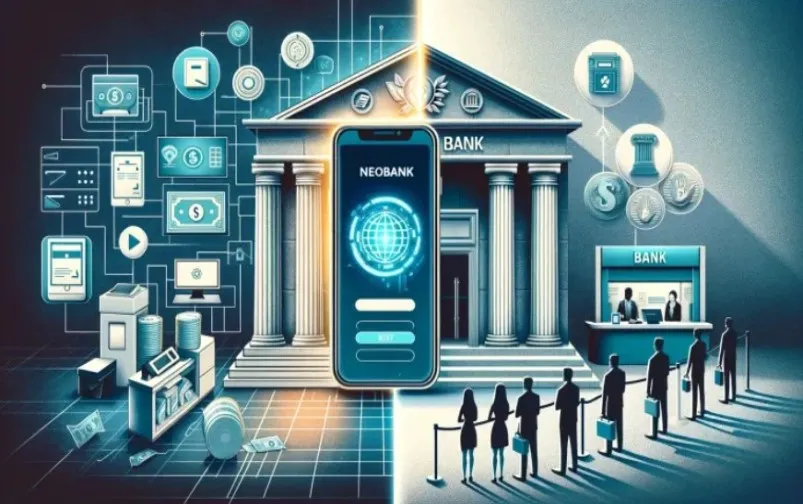For years, traditional banks held a monopoly on consumer and business finance, relying on decades of trust and massive infrastructure. But 2025 is shaping up to be the year that digital-only banks officially take the lead. With no physical branches, lightning-fast approvals, and AI-driven services that rival human financial advisors, these new players are outpacing old-school institutions in both innovation and customer satisfaction. The shift isn’t just about convenience—it’s about a fundamental change in how money moves.
The Shift to Speed and Simplicity
Digital-only banks are redefining what people expect from financial institutions. While traditional banks still require in-person visits for certain transactions, digital banks have cut out the red tape entirely. Account approvals take minutes instead of days, and loan applications process faster than ever before.
Part of this shift is powered by AI and machine learning, which analyze creditworthiness in real time. Instead of outdated systems that rely on credit scores alone, these banks use spending patterns, income trends, and even social data to approve loans. That’s opening doors for a new generation of entrepreneurs and consumers who might have struggled with traditional lending criteria.
AI-Powered Banking and Crypto Investments for Massive Growth
One of the biggest drivers of digital banking success is the seamless integration of AI-driven investment tools. Customers no longer have to rely on traditional brokers or spend hours researching stocks. AI now predicts market trends, suggesting personalized investment strategies tailored to an individual’s risk tolerance and financial goals.
And it’s not just traditional investments—crypto investments for massive growth are now built into banking platforms, making it easier than ever to trade digital assets without third-party apps. While traditional banks have cautiously dipped their toes into crypto, digital banks are fully embracing decentralized finance, offering staking, lending, and high-yield savings accounts backed by blockchain technology.
Regulatory Hurdles and the Fight for Trust
Despite their rapid growth, digital banks still face hurdles in gaining full consumer trust. Regulatory scrutiny remains a challenge, with governments tightening oversight on fintech innovations. Traditional banks leverage this uncertainty, questioning the long-term security of fully digital finance. However, digital banks are responding with stronger fraud prevention measures, AI-driven compliance monitoring, and insurance-backed deposits that rival legacy institutions. As these platforms prove their resilience, trust is shifting. Consumers aren’t just embracing digital banking—they’re demanding it. And as regulations catch up, the divide between traditional and digital banking will only grow wider.
AI Video Creator Tools and Hyper-Personalized Banking
Beyond investments, digital banks are using AI to change how customers interact with their money. AI video creator tools are now personalizing financial education, breaking down complex topics into easy-to-digest visual content. Imagine a bank that doesn’t just send you a dense, jargon-filled email about interest rates but instead delivers a quick, AI-generated video explaining exactly how your mortgage payment is calculated.
This level of personalization is setting digital banks apart. Instead of a one-size-fits-all approach, customers receive tailored insights on saving, spending, and investing. The more a customer engages with the platform, the smarter it becomes—offering proactive alerts and suggestions that feel like they’re coming from a personal financial coach.
An AI Avatar for Business Needs
What’s truly giving digital banks the upper hand in 2025 is the rise of AI-driven financial avatars. Designed to function as a 24/7 virtual banking representative, an AI avatar for business needs is becoming the new face of customer service. These avatars don’t just answer frequently asked questions—they negotiate loan terms, analyze cash flow for small businesses, and even suggest tax strategies.
For entrepreneurs, this means having an always-available financial advisor without the steep hourly fees. Instead of scheduling meetings with human consultants, businesses now interact with AI that understands their specific industry, adapts to their financial history, and offers real-time advice that would normally take weeks to compile.
This technology is already reshaping how startups and freelancers manage their finances. Whether it’s automating expense tracking, optimizing tax deductions, or finding the best funding options, AI avatars are making it easier than ever to run a business without financial guesswork.
The End of Traditional Banking as We Know It
The rapid rise of digital banks signals a turning point in finance. Customers are no longer tied to outdated systems, long wait times, and limited service hours. Instead, they’re choosing banks that operate at their speed—banks that offer instant approvals, AI-powered insights, and seamless integration with the technologies shaping the future.
While traditional banks won’t disappear overnight, they’re facing a new reality: adapt or be left behind. And with digital banks continuing to innovate at breakneck speed, the old way of banking may soon feel as outdated as writing checks at the grocery store.
Read More From Techbullion



































